Woljeongsa Museum (월정사 성보박물관)
9.3 Km 1324 2021-03-27
176, Odaesan-ro, Pyeongchang-gun, Gangwon-do
+82-33-339-7000
Located within Woljeongsa Temple in Pyeongchang-gun, Gangwon-do, Woljeongsa Museum was founded in October 1999, and began displaying treasures and artifacts from some 60 plus temples in the southern part of Gangwon region. Currently, the museum houses Documents of Sangwonsa Temple (National Treasure No. 292), 12 sarira found in the Octagonal Nine-story Stone Pagoda of Woljeongsa Temple (National Treasure No. 48), and many other treasures.
Sangwonsa Temple (상원사(오대산))
11.6 Km 18715 2021-12-06
1215-89, Odaesan-ro, Pyeongchang-gun, Gangwon-do
+82-33-332-6666
Sangwonsa Temple is located 8 kilometers north of Woljeongsa Temple. The temple was built by Buddhist monk Ja Jang in the 12th year of Silla Queen Seondeok, and rebuilt in 705 during the 4th year of King Seongdeok's reign. It burned down in 1946, but was restored once again in 1947. The temple is home to the Bronze Bell of Sangwonsa (a National Treasure), the oldest bronze bell in the nation. The bell, built during the 24th year of King Seongdeok, has a x_height of 1.67 meters and a diameter of 91 centimeters with a beautiful, clear ring. Other relics at the temple include Statue of Child Manjusri, said to have been seen directly by King Sejo, as well as a tablet commending the rebuilding of Sangwonsa Temple, written by King Sejo. Gwangdaegeori, located at the temple entrance, is also connected with King Sejo through a story of his bathing in the pure mountain stream one day while visiting Sangwonsa Temple.
Myeongga (명가)
13.8 Km 479 2021-08-07
16-7, Boraeryeong-ro, Pyeongchang-gun, Gangwon-do
+82-33-333-4333
Serving a variety of Chinese dishes, it has a large space that can accommodate group diners. This restaurant's signature menu is noodles in black bean sauce. This Chinese (cuisine) restaurant is located in Pyeongchang-gun, Gangwon-do.
Bongpyeong 5-day Market (봉평5일장/봉평시장 (2, 7 일))
14.1 Km 34939 2020-06-19
14-1, Dongijangteo-gil, Pyeongchang-gun, Gangwon-do
+82-33-336-9987
Bongpyeong Market opens on days with '2' and '7' with the interval of five days. One can imagine as the protagonist in the famous novel by Lee Hyo-seok 'When the Buckwheat Blossoms' as he or she goes through the market. Recently, memil without fail, has been the top product in the market. From Memil Mak-guksu (buckwheat noodles), Memil-buchim (buckwheat pancake), Memil-jeonbyeong (buckwheat crepe), Memil-Jjinbbang (buckwheat steamed bun), Tojong Memil-Sundae, Memil Guksu-Jeongol (buckwheat noodles hotpot), Memil Namu Bibimbap and more, a variety of buckwheat-related foods can be found in this market.
Hyundai Buckwheat Noodles (현대막국수)
14.1 Km 18587 2024-02-14
17 Dongijangteo-gil, Bongpyeong-myeon, Pyeongchang-gun, Gangwon-do
Buckwheat, a staple in Gangwon State, is finely milled to make the base for Buckwheat Noodles. In Pyeongchang, where buckwheat fields are a common sight, numerous eateries specialize in these noodles. The signature dish here is the Pure Buckwheat Noodles, made exclusively from Korean-grown buckwheat. Its popularity stems from the noodles’ light broth, garnished with vegetables, offering a clean, non-overpowering flavor. For those who prefer a bit of a kick, the Spicy Buckwheat Noodles come with a tangy seasoning, customizable to taste. The accompanying side dishes are equally delightful, featuring items like Buckwheat Pancakes with buckwheat and cabbage, and Buckwheat Crepes stuffed with kimchi filling—each menu item invites one to savor the authentic essence of this cherished grain.
Hyoseok Culture Village Buckwheat Food Street (효석문화마을 메밀음식거리)
14.1 Km 30194 2021-03-11
31, Gipung 3-gil, Pyeongchang-gun, Gangwon-do
+82-33-330-2771
The Hyoseok Culture Village is the place where author Lee Hyo-seok (penname “Gasan”) was born and raised. The village is also the setting of the author’s story "When Buckwheat Flowers Bloom,” one of the most celebrated Korean short stories to date. Since 1999, the Hyoseok Cultural Festival has been held here every September to commemorate the writer. Visitors to the festival can enjoy various foods and events as well as a replica of scenes from the book. For those that are searching for a more tranquil visit, avoid the month of September, when the buckwheat flowers are in full bloom. Don't forget to try all the different memil (buckwheat) dishes offered throughout the area all year round.
Migayeon (미가연)
14.3 Km 7463 2019-05-21
108, Gipung-ro, Pyeongchang-gun, Gangwon-do
+82-33-335-8805
Migayoun is a Korean restaurant specializing in dishes made of buckwheat and buckwheat sprouts, which are known for their high vitamin P content. Pyeongchang, where Migayoun is located, is particularly famous for buckwheat, the sprouts of which are clinically proven to be good for diabetes, geriatric diseases, and weight control.
Hyoseok Cultural Festival (평창효석문화제)
14.4 Km 38903 2023-09-06
157, Ihyoseok-gil, Pyeongchang-gun, Gangwon-do
+82-10-5369-2574
Hyoseok Cultural Festival is held to commemorate Korean writer Lee Hyo-seok and his popular novel "When Buckwheat Flowers Bloom," which mainly takes place in Bongpyeong. The festival offers diverse programs inspired by the book, allowing visitors to explore the author's work as well as the beauty of Bongpyeong with its buckwheat flowers in full bloom. Visitors can also get to know more about the author by visiting the Lee Hyo-seok Culture Village and the Lee Hyo-seok Memorial Hall located near the festival venue.
Lee Hyo-seok Culture Village (이효석문화마을)
14.6 Km 32006 2022-12-29
Wongil-ri, Pyeongchang-gun, Gangwon-do
+82-33-335-9669
Lee Hyo-seok Culture Village is the place where the author Lee Hyo-seok (pen name “Gasan”) was born and raised. The village is also the setting of the author’s novel "When the Buckwheat Blossoms,” one of the most celebrated Korean short stories to date.
In 1990, the village place was designated ‘first national cultural village’ by the Ministry of Culture and Tourism. The village is comprised of the author's birth house, a water mill, Gasan Park, Lee Hyo-seok Memorial Hall, and a buckwheat museum. During the peak of the blossoming season in early fall, the annual Lee Hyo-seok Cultural Festival takes place and visitors can enjoy the beautiful scenery of snow-white fields of buckwheat flowers.
Lee Hyo-seok Cultural Festival commemorates the modern Korean writer and features buckwheat-themed programs. Events include a Hyo-seok essay contest, traditional performances, a costume parade, a photo contest, and "When the Buckwheat Blossoms" plays and related performances. During the festival, visitors can enjoy makguksu (buckwheat noodles) and memil buchim (buckwheat pancakes) and tour the locations that appear in the famous short story.
1975 Yeonggyeguksu The deungsim(1975영계국수The등심)
14.7 Km 68 2021-04-16
296, Solbong-ro, Pyeongchang-gun, Gangwon-do
+82-10-8418-5557
It is a restaurant where you can enjoy fresh meat as it is also a butcher’s shop. This Korean dishes restaurant is located in Pyeongchang-gun, Gangwon-do. The representative menu is sausage stew.
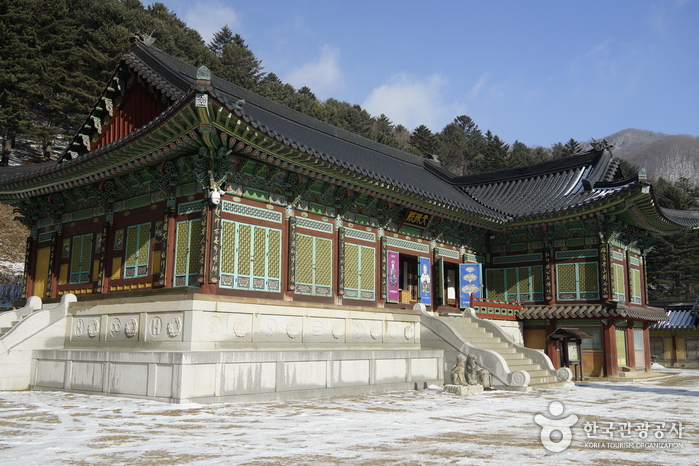
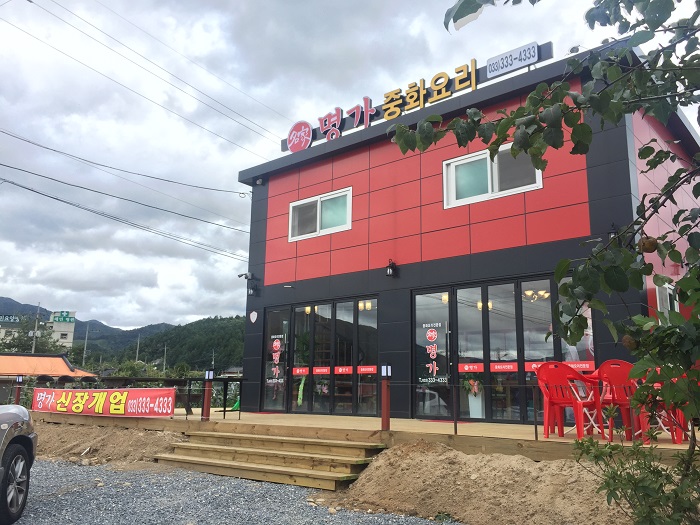
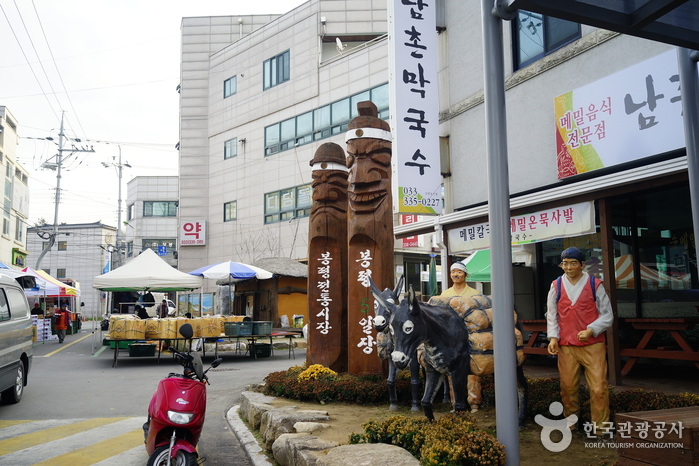
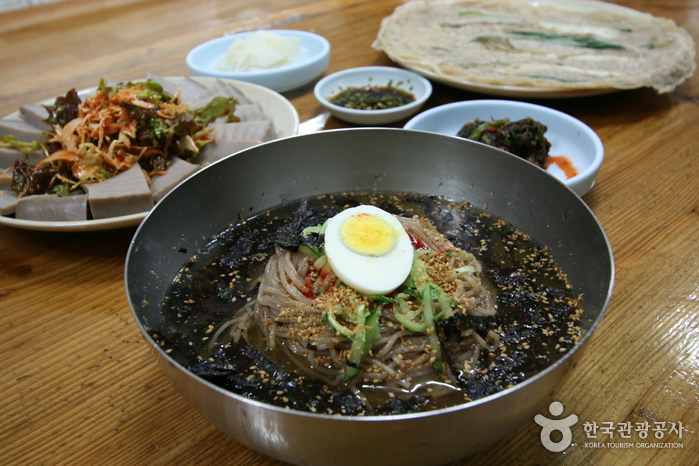
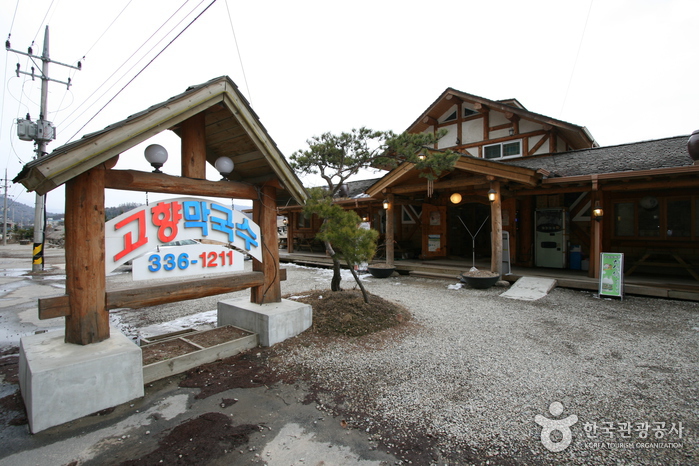
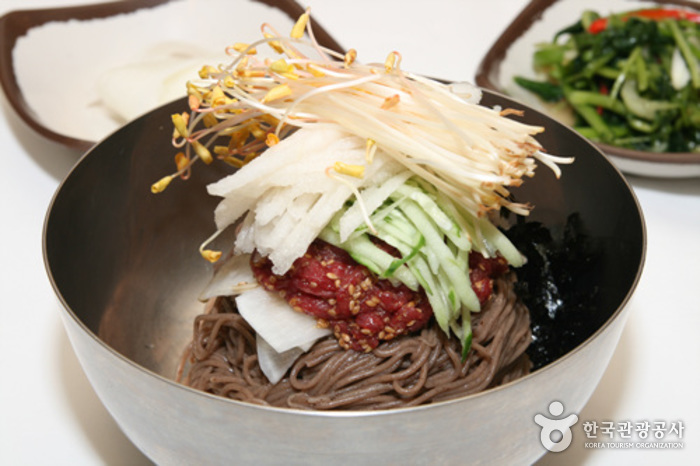
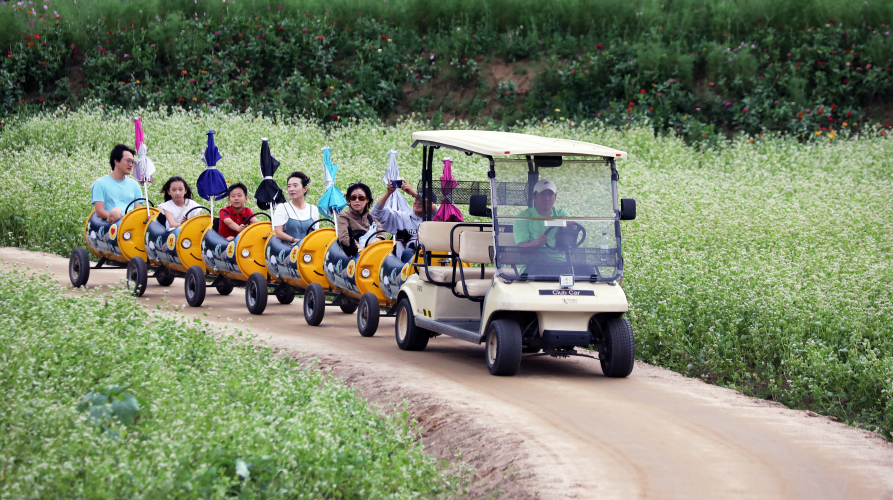
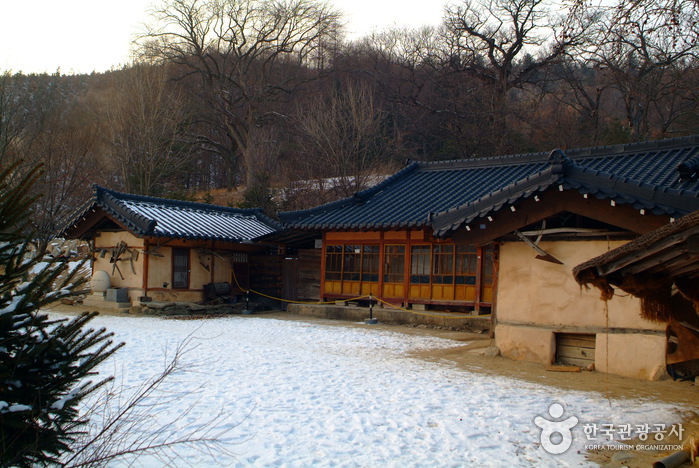
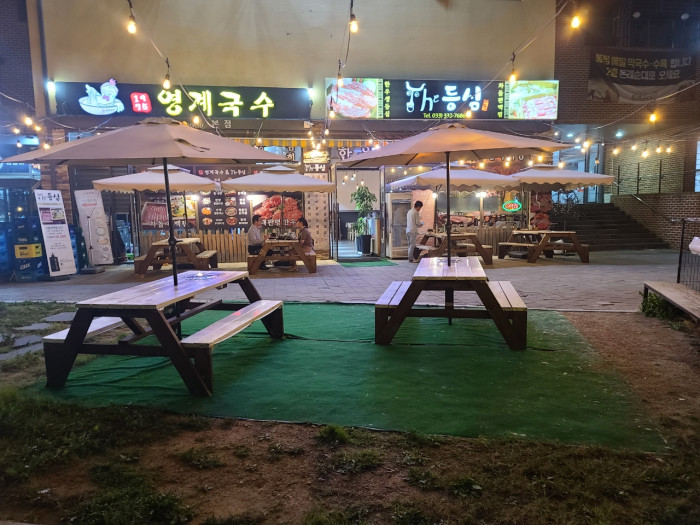
 English
English
 한국어
한국어 日本語
日本語 中文(简体)
中文(简体) Deutsch
Deutsch Français
Français Español
Español Русский
Русский